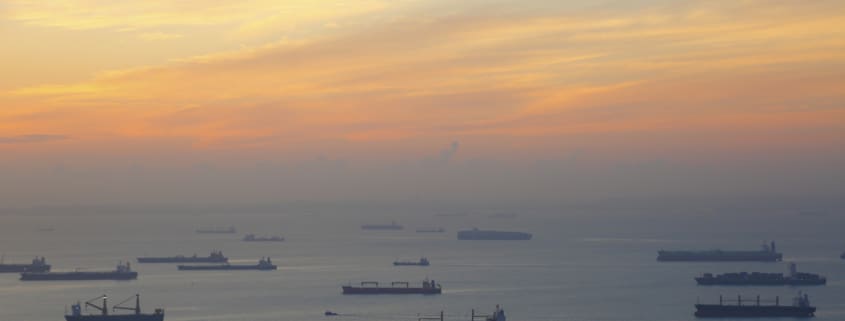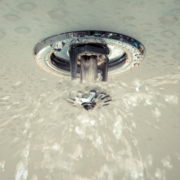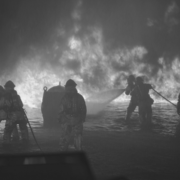Oh, Ship! It’s a Cargo Crisis
You’ve likely heard about the cargo crisis in Houston and around the country on the news. One often-overlooked angle of the cargo crisis, however, is its relationship to following a strict marine fire safety checklist.
What Is the Cargo Crisis?
There are currently shipping backlogs across the country, and globe even.
A press release from Port Houston delivered a high cargo record with record low air emissions. In the report, Executive Director Roger Guenther stated that with the rise of cargo deliveries in the peak season, “the unprecedented surge in import volumes has created significant challenges across the nation… Houston is not immune to current disruptions in the global supply chain.”
The high volume of cargo ships brings up issues of ship safety.
Port Houston, however, “remains closely engaged with customers, ocean carriers, stevedores, labor, truckers, and all other industry partners,” says Guenther. He continues on to share that their goal is “to seek solutions to maximize the opportunities to keep freight moving efficiently.”
Ship Fire Safety
With so many cargo ships backed up, incidents like the California Pipe Line oil spill must be prevented. Yahoo News reports that the oil spill may have been caused by, “a ship’s anchor snagging a pipeline.”
You wouldn’t think fire could stand a chance when surrounded by a body of water—but it does.
There are preventative measures that need to be taken following all marine fire and oil spill safety regulations and guidelines.
Marine Safety Checklist
There are a multitude of boxes to check when it comes to keeping your maritime operations safe and fire-free. We’re providing a comprehensive list to get you thinking about the safety of your marine operations.
CERTIFICATES AND DOCUMENTS
There is a long list of certificates and documents that must be carried on board at all times. This list varies based on region, whether or not your vessel carries passengers, and vessel type.
This list might include a Cargo Ship Safety Equipment or Passenger Ship Safety Certificate, all servicing records including proof of fire extinguisher servicing and pressure tests, a damage control manual, any records of testing, drills, and maintenance, a variety of training manuals, the list goes on! For more specific information on staying up to code and what you need to keep on board, contact our VFS team.
FIRE SAFETY EQUIPMENT
There are hundreds of safety measures in place to prevent fire aboard your vessel, including a handful of safety equipment that must be carried and tests that must be performed. Let’s shoot for smooth sailing, please.
- Water Based Systems: Valves, Alarms, Fire Pumps, and Pressure Gauges must be tested and properly working with pipework in satisfactory condition: Water Mist, High & Low Expansion Foam Systems.
- Ventilators and Fire Dampers: Must be clean and free of debris with flaps in fair condition.
- Proper Functioning Fire Detection, Smoke Detection & Gas Detection Systems that provide the necessary coverage and protection of assets on board.
- Properly installed and maintenanced Fixed Extinguishing Systems: Co2, Clean Agent & Dry Powder Systems.
- Personal equipment: including firefighting & protective wear, Self-Contained Breathing Apparatuses (SCBAs), and Emergency Escape Breathing Devices (EEBDs), Inflatable Life Jackets, Portable Gas Detectors, Immersion Suits, Fireman’s Outfits & Chemical Suits.
Additionally, pathways must always be free of obstruction and clearly marked in the event of an emergency evacuation. Doors must only be held open by approved methods.
ENGINE ROOM MAINTENANCE
Did you know that approximately 90% of marine fires start in the engine room? This considered, don’t underestimate the importance of routinely checking your engine room’s fire pumps, emergency shutdowns and valves, high-pressure fuel lines, and main zones for proper functionality and cleanliness.
DECK MAINTENANCE AND CREW READINESS
In case of an emergency, your crew should be familiar with the use of these fire protection systems and able to abandon ship if necessary. Fire drills should be performed routinely. Preparation is key for tip-top marine fire safety. As for deck safety, structures in place might include a variety of paint lockers, ventilators, and international shore connections.
EMERGENCY EQUIPMENT
Fingers crossed, this equipment doesn’t need to be used. Your emergency equipment, including emergency generators, batteries, pumps, and tankers, however, must be properly maintained, inspected, and ready to be used at any moment.
HERE TO HELP!
While you’re on the water, whether it be for pleasure or work, marine fire safety and preparation cannot be overlooked. Having the right fire safety equipment and performing the right maintenance and routine inspections may be the difference between life and death.
Our VFS team is prepared to get your vessel in tip-top shape with the right marine fire safety equipment. In fact, the VFS Houston Team has been continuing to grow our marine department and has recently acquired four new Tug & Barge Companies—bringing their annual total of vessels to perform fire safety inspections and testing to approximately 375.
So, does all this talk of oil make you nervous about oil fires — out on the open or in your very own commercial kitchen? Don’t worry, read here to know what to do in case of an oil or grease fire.











